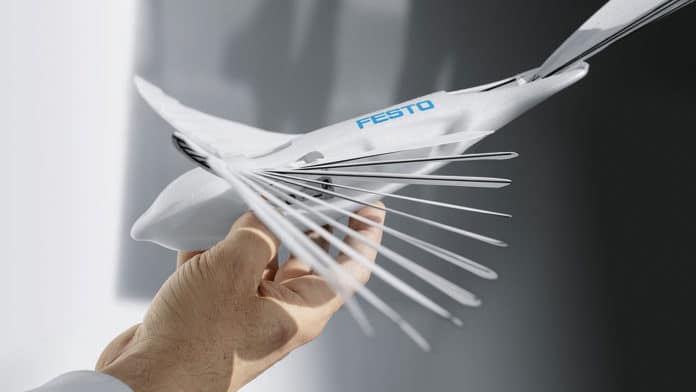The German robot company Festo has so far developed a number of interesting prototype robots that resembled kangaroos, jellyfish, and more. One of the latest creations of this company is a bionic bird named BionicSwift, and it is truly impressive.
BionicSwift is equipped with wings that imitate the plumage of real birds, as you can see in the video below, it is capable of flying safely like real birds and in a coordinated pattern in a defined airspace. The robotic “feathered” bird has a wingspan of 68 cm, a body length of 44.5 cm, and a weight of 42 grams. Inside the body, Festo has crammed the wing movement mechanism, as well as the communication technology and the controllers for flapping. There is also room for a brushless electric motor, two servo motors, a battery, the gear unit, and various circuit boards.
The wings are made with “lamellae” (feathers) made from overlapping sheets of ultralight and flexible foam, but at the same time very robust. The individual lamellae fan out during the wing upstroke, allowing air to flow through the wing. This means the birds require less power to propel the wing upwards. And when BionicSwift flaps its wings down, they close to fly with a more powerful flight. And all of this contributes to giving BionicSwift a much better flight profile than previous robotic bird models, according to Festo.
Each of the robotic birds has a radio-based indoor GPS with ultra-wideband technology (UWB) that enables coordinated and safe flight. The artificial birds also has a radio marker that sends signals so that its exact position can be tracked by a computer that acts as a navigation system to set up pre-programmed routes and flight paths for the birds. This allows for a precision flight that prevents robotic birds from colliding with each other or against anything else.
If necessary, BionicSwift robotic birds will also be able to independently correct routes, to ensure their safety without the need for human intervention.
The practical applications of the BionicSwift can be very varied. They can be used in the networked factory of the future, for example, to transport materials and optimize the use of space within a factory.
